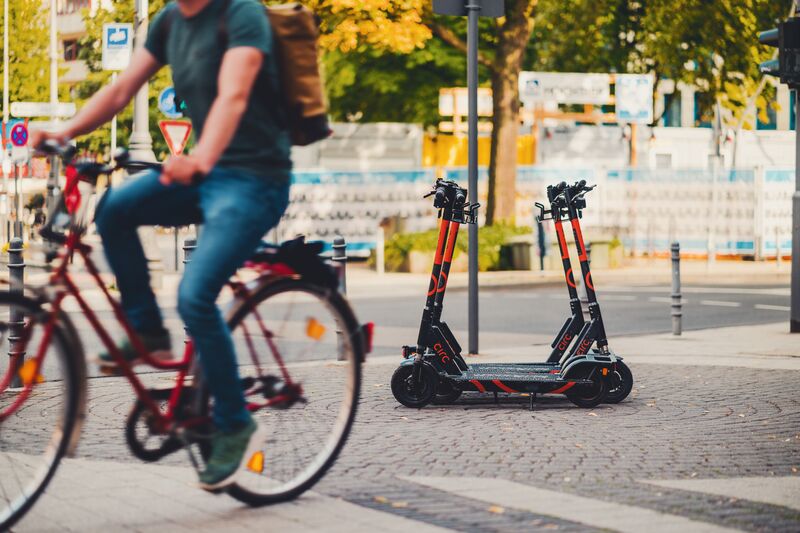
Scooters are growing in popularity but so are concerns about their accessibility.
Colorado Springs is considering allowing e-scooters in its downtown area, not too far from our own ADA center. This is exciting news for many locals. For people with disabilities, this brings up several concerns. E-scooter companies claim they lessen the burden of congested city traffic. But they may, in fact, increase barriers to accessibility instead. Rather than removing barriers, some people with disabilities face even more than before.
E-scooters seemed like a great alternative means of transportation. They were designed to help with congested traffic in cities with larger populations. For many, e-scooters are a convenient, fun and fast way to travel short distances. It is also an inexpensive alternative for anyone who does not want to pay ride-sharing fares.
They have now become a contested topic for their accessibility (or lack thereof.) The Americans with Disabilities Act (ADA)'s protects people with disabilities. It ensures equal access and equal opportunity to participate in all aspects of public life. These e-scooters present challenges to that equal access. They block sidewalks and other forms of public right-of-way and generally exclude many people with disabilities.
Issues Surrounding Safety and Accessibility
E-scooters represent hazards for some disability populations. Take, for instance, people with mobility disabilities like wheelchair users. Riders may leave the e-scooter wherever, including curb ramps and in the middle of a sidewalk. Also, anyone who cannot stand for a prolonged time might struggle with no seat available to rest and ride.
For people who are Blind or low-vision, many cannot safely ride the e-scooters. Nor can enjoy the scooters and there are no tandem e-scooter options at this point in time. E-scooters parked near a building also hinder cane users’ ability to navigate the city.
People who are Deaf or hard of hearing cannot hear e-scooters zooming by. If cities require riders use sidewalks, it only serves to increase the risks of accidents. These complications reflect the lack of access for people with disabilities to enjoy e-scooters.
Exclusion for People with Disabilities
Disability groups are often excluded when companies release new technology. But, their input is invaluable during the creation, release and consumption of any product to ensure true accessibility.
Title III of the ADA covers any business that sells a product to the general public. We also call them public accommodations. When necessary, Title III requires a business reasonably modify their policies and procedures to serve customers with disabilities.
There have been some attempts to increase accessibility. Lime has come out with scooters featuring a seat. Yet, the buck does not stop there. If one were to have a secondary issue with balancing, they will likely struggle staying on the e-scooter.
Solutions and Removing Barriers
The purpose of the ADA is to remove barriers for people with disabilities. These scooters have to potential to actually increase barriers. Therein lies the problem. With the 30th anniversary of the ADA, it is critical that businesses make their products available for all.
Removing barriers both increases a business’ consumer base and helps the general public. In the case of e-scooters, improving accessibility can decrease the risk of accidents for cyclists and drivers. It is vitally important that companies ensure their goods and services are accessible for the entire public, including those with disabilities.
In the Meantime
Some simple solutions that anyone riding an e-scooter can do are:
- Ride in the street or bike lane and not sidewalks.
- Park the e-scooter standing up, near the curb and away from any curb ramps.
- Make sure there is a 3-foot cushion so people can safely get around.